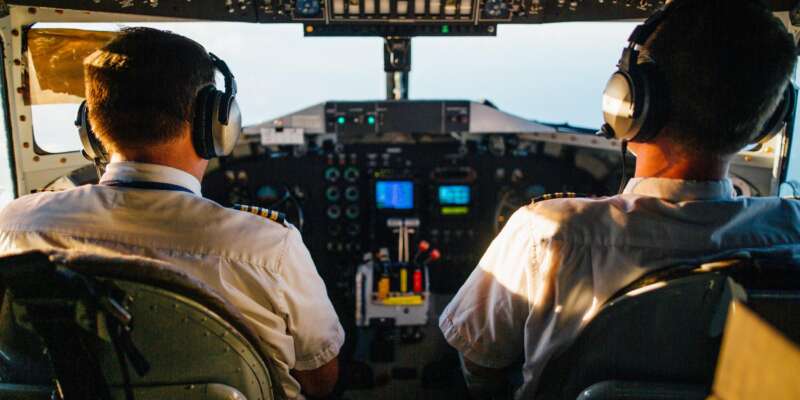How Do Pilots Prepare Themselves Before a Flight?
While a pilot doesn’t work alone, the responsibility of keeping the flight safe falls mostly on them because the aircraft is “theirs” while they’re in the cockpit. As such, it’s important for a pilot to prepare well before taking to the skies.
Are you curious about what a pilot does to make their flights as safe as possible? Are you planning on attending a flight school to become a pilot yourself and want to know what’s included in your duties? Read on below.
Go Over the Flight Path
For non-aviators, the sky might seem like a free-for-all space where any aircraft can take any “road” to reach their destination. However, this is far from true. There are certain portions of airspace that can’t be used due to a variety of factors, like the weather and government-declared no-fly zones. Thus, pilots need to set a flight path that will take them to their intended destination without running into obstacles and without breaking the law.
Before take-off, pilots need to review their flight path and ensure that everything is in order. If not, they may need to make some adjustments and let the corresponding authorities know of the change immediately for coordination. The situation can change quickly up in the air, so pilots should also be prepared with a backup plan.
Conduct a Pre-flight Inspection
The pilot and the entire flight crew board the plane well ahead of the passengers. This is so that they can conduct a pre-flight inspection without any disturbances. The priority is the physical inspection, usually assigned to the first officer (the co-pilot), to make sure that the aircraft’s components are in good condition. This pre-flight inspection is ingrained into every pilot as part of their pilot training in the Philippines.
The pre-flight inspection also covers the aircraft’s software, such as the communications system, navigation system, autopilot, and the like. If any one of these systems aren’t working as they should, the safety of everyone on board may be compromised. A crew of maintenance officers needs to address the issues before the flight can proceed.
Monitor the Weather and Other Conditions
One of the most important things that a pilot should do to prepare for a flight is to monitor the weather, and not just the conditions on the day itself. Indeed, it’s better to track the weather at least a couple of days before the flight. For example, if it rained the day before the flight, the clouds may still be thick along the flight path and can lead to poor visibility. As such, the pilot may decide to plot another course.
Fortunately, it’s easier than ever to monitor the weather through the internet. There are several websites that can be checked for satellite pictures and videos, as well as radar imagery. There are also radars at the airports that provide up-to-date weather alerts.
Aside from the weather, there are also other elements that the pilot should monitor. These include things like recent volcanic eruptions, forest wildfires, and even fireworks displays. All of these can affect a flight’s comfort and safety, so they should be closely monitored before take-off.
Conduct a Flight Briefing with the Crew
As earlier mentioned, a pilot doesn’t work alone. On a commercial flight, for example, the aircrew is traditionally composed of the following members:
Flightdeck Crew
- Pilot
- Copilot
- Second officer
- Third officer
- Relief crew
- Flight engineer
- Aerial sensor operator
Cabin Crew
- In-flight service manager
- Flight attendants
- Flight medic
During a flight briefing, the pilot goes over the details of the flight with their entire crew. This is also the time to review weather conditions for a final time, determine fuel needs, as well as verify the aircraft’s altitude and speed for the flight. Finally, the crew will go over their safety protocols and the backup flight plan.
Document Review
There’s plenty of paperwork that a pilot needs to review before take-off. First, there’s the flight release which is essentially a digital logbook. It contains a record of an aircraft’s every flight, including details such as the name of the entire crew, the time of the flight, and the time of arrival.
There’s also a maintenance release, which the pilot has to fill out whenever there’s an issue detected on the aircraft. This way, the maintenance team can easily fix the problem or recommend for it to be deferred. If the problem can’t be fixed or deferred, then the aircraft will most likely be grounded in that case. In addition, pilots check if there are any NOTAMs or notices to airmen before the flight. NOTAMs are documents that contain information about anything that can affect the safety of flight operations. Such things include problems in airports along the flight path, flight hazards, and the like.
Lastly, pilots accomplish a pre-departure clearance, issued by the control tower. If the pilot doesn’t submit this form, the aircraft won’t be allowed to take off.
Pilots have an enormous responsibility to keep everyone in their flights safe, no matter if it’s a commercial trip with one hundred passengers or a cargo flight with only a full crew on board. With these preparations, pilots can ensure a smooth-sailing journey.















